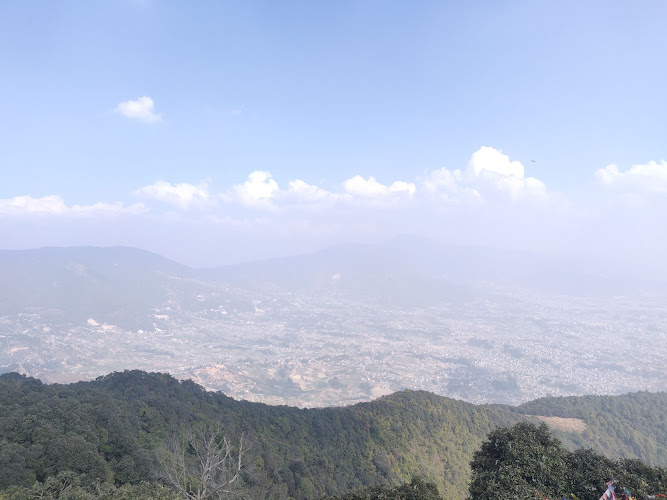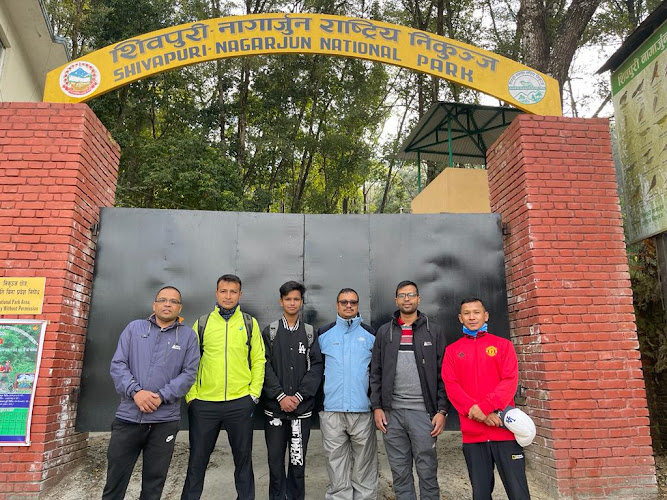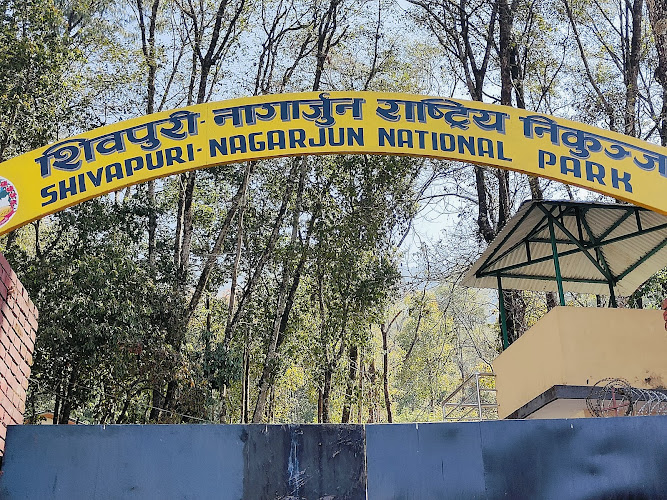



Nagarjun Forest RESERVE - Urban Leopard Habitat & Kathmandu Valley Escape
Trishuli Hwy, Nagarjun 44600
Rising abruptly from Kathmandu Valley's western rim, Nagarjun Hill's forests offer the capital's most accessible wilderness escape—a 2,128-meter peak just nine kilometers from downtown where morning hikers can stand in oak and rhododendron groves watching sunrise illuminate the Langtang and Manaslu ranges while monkeys chatter overhead and hidden leopards prowl beneath the canopy. Now incorporated into Shivapuri Nagarjun National Park, the Nagarjun Forest Reserve section functions as Kathmandu's backyard national park, a place where office workers hike before breakfast, where Buddhist monks maintain hilltop monasteries, and where wildlife persists despite proximity to three million people living in the sprawling metropolis visible from the summit.
Jamacho Peak, crowned by a Buddhist monastery at 2,130 meters, anchors the reserve and provides the focal point for the popular Nagarjun day hike. The well-maintained trail climbs through dense forest rich in oak, pine, bamboo, and rhododendron, gaining roughly 650 meters elevation from the Balaju entrance in 2-3 hours of steady uphill walking. The monastery—Jamacho Gumba—welcomes visitors with prayer flags snapping in wind and monks who maintain meditation practices while serving tea to trekkers who arrive breathless from the climb. From the summit clearing, panoramic views span the Kathmandu Valley's urbanization to the north where Himalayan peaks float above pollution haze on clear mornings.
Wildlife adapted to near-urban conditions thrives in these protected forests. Rhesus monkeys dominate, their troops raiding picnickers and begging for handouts with learned persistence. The more elusive Assamese monkeys inhabit higher elevations. But the real conservation success stories hide from casual hikers: leopards, documented through camera traps and occasional sightings, hunt the forests at night, preying on monkeys, barking deer, and wild boar. Himalayan black bears forage for berries and insects, keeping to remote sections where human traffic remains minimal. Clouded leopards and leopard cats—both documented by camera traps in 2010—represent rare species thriving despite urban encroachment. The park's 177 bird species include uncommon and endangered specialists, 102 butterfly species, and diverse flora including medicinal plants harvested under permit by traditional healers.
The reserve's value extends beyond recreation and wildlife to watershed protection and climate regulation for Kathmandu Valley. The forests slow monsoon runoff, reducing flash flood risks while recharging aquifers that supply drinking water. Trees scrub pollution from air flowing up from the valley, providing measurable air quality improvements within park boundaries. Temperature regulation creates microclimates several degrees cooler than the urban heat island surrounding the forest, offering respite from Kathmandu's sweltering pre-monsoon heat.
Cultural and spiritual significance permeates Nagarjun. Multiple monasteries and shrines dot the hillsides, pilgrimage destinations for Buddhists and Hindus who climb not for exercise but for merit and blessings. The forest's tranquility attracts meditation practitioners seeking isolation within walking distance of city amenities. This multi-use character—recreational hiking, spiritual pilgrimage, wildlife habitat, watershed protection—creates broad constituencies supporting conservation even as land values and development pressures mount.
Challenges include illegal logging, wildlife poaching, encroachment from expanding settlements, and recreational impacts from thousands of weekend visitors who leave trash, create noise disturbance, and occasionally harass wildlife. The park charges modest entrance fees (100 rupees for Nepalis, 600 rupees for foreigners) that fund maintenance but never match actual protection costs. Balancing public access with conservation needs requires constant management adjustments, from trail maintenance to waste collection to ranger patrols deterring illegal activities.
Yet Nagarjun succeeds as urban conservation precisely because accessibility creates stakeholders. The businesswoman who hikes before work, the monks maintaining mountaintop monasteries, the schoolchildren on field trips learning about forests—all develop investment in protection through direct experience. In rapidly urbanizing Nepal where nature often seems distant from daily life, Nagarjun demonstrates that conservation thrives when people can walk to wilderness from their homes, when forests provide tangible benefits from recreation to clean water, and when protected areas function as community resources rather than distant abstractions managed by bureaucrats. Just nine kilometers from Kathmandu's chaos, leopards still hunt and rhododendrons bloom, proof that coexistence remains possible when enough people care enough to demand it.
Park Features & Amenities
🏃 Activities
- ✓ Hiking
🏗️ Amenities
- ✓ Picnic tables
- ✓ Public toilet
🎠 Children
- ✓ Good for kids
- ✓ Kid-friendly hikes
🐕 Pets
- ✓ Dogs allowed
Visitor Information
🕐 Best Times to Visit
Spring (Mar-May): Pleasant weather, blooming flowers
Autumn (Sep-Nov): Clear skies, comfortable temperatures
Early Morning: Best for wildlife viewing and photography
🗺️ Getting There
By Car: Trishuli Hwy, Nagarjun 44600
Public Transport: Local buses and taxis available
Walking: Check distance from city center
💡 Visitor Tips
• Bring water and sun protection
• Wear comfortable walking shoes
• Check weather conditions before visiting
• Bring camera for nature photography
Explore More in Nepal
Nearby Attractions
Popular Activities
Ready to Visit Nagarjun Forest RESERVE?
Plan your visit to this amazing destination with our comprehensive travel guide and insider tips.
Seasonal Travel Guide
Weather & Best Time
Winter brings cool temperatures (5-15°C) with clear skies and snow-capped peaks. Perfect for mountain views but cold at higher altitudes.
Best Activities:
- Mountain viewing
- Cultural experiences
- Spa and hot springs
- Photography of snow peaks
- Indoor cultural activities
Travel Tips
- Visit during December-February for snow-capped views
- Pack warm clothing for cold temperatures
- Book hotels with heating facilities
- Plan for shorter daylight hours
Packing Suggestions:
- Warm winter clothing
- Thermal layers
- Warm hat and gloves
- Sturdy winter boots
- Hot water bottle
Quick Facts
Best time: Autumn (Sep-Nov)
Duration: 1-3 days
Difficulty: Easy
Cost: Budget-friendly